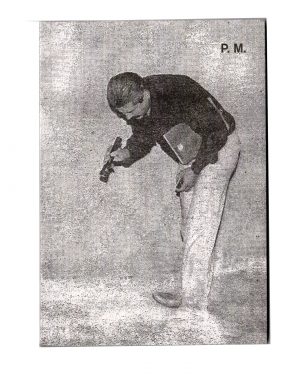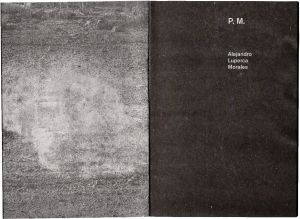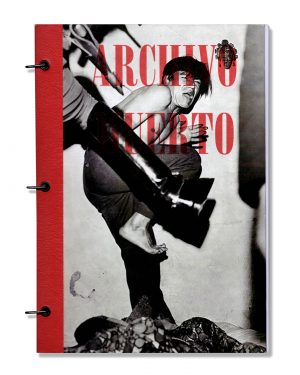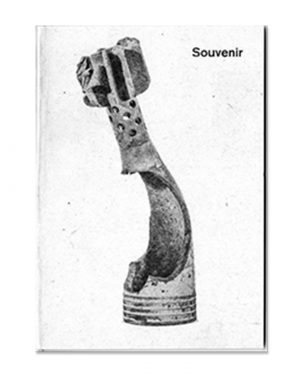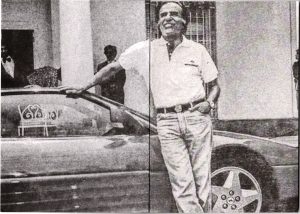Archivo de la Memoria Trans Argentina
Descripción
El libo se estará enviando a partir de Abril. The book will be send during April.
Si compras el libro desde Argentina, hacelo a través de este link: https://editorialchaco.empretienda.com.ar/
If you are going to buy the book from Argentina, please go to: https://editorialchaco.empretienda.com.ar/
“Archivo de la Memoria Trans es una reunión familiar. Surge de la necesidad de volvernos a abrazar, volvernos a mirar, de reencontrarnos después de más de 30 años con las compañeras que creíamos muertas, con las que nos distanciamos por diferencias o por el exilio; y principalmente con los recuerdos de las que ya no están.
De nuestro pasado, atravesado por la exclusión y la violencia, quedaron muchas cosas pendientes en la urgencia por existir. Fotografías, relatos, diarios, revistas y objetos dan cuenta de nuestro activismo antes del activismo, y del porqué hoy somos menos de 100 las que pasamos los 55 años.
El proyecto surgió por Claudia Pía Baudracco y María Belén Correa, ambas mujeres trans activistas y fundadoras en 1993 de ATA (Asociación de Travestis Argentinas), quienes habían imaginado tener un espacio donde reunir a las compañeras sobrevivientes y sus recuerdos. Pía fallece en el 2012 –meses antes de lograr la sanción de la Ley de Identidad de Género–, y María Belén desde el exilio funda el Archivo. En 2014, con la ayuda de la fotógrafa Cecilia Estalles, comienza un trabajo de recopilación y de preservación digital de la documentación para su conservación y protección. Actualmente, el Archivo contiene un acervo de más de diez mil documentos; se registra un material que comienza desde principios del siglo XX hasta fines de los 90. Actualmente las integrantes del proyecto somos: María Belén Correa, Cecilia Estalles, Carmen Ibarra, Magalí Muñiz, Carolina Figueredo y Cecilia Saurí.
Desde el Archivo, ensamblamos recuerdos para hacer el retrato de las amigas que ya no están. En la disputa por la versión real de la anécdota, descubrimos detalles que habíamos olvidado, pero que otra compañera guardó y que están en la órbita de nuestras estrellas. Miramos con nostalgia, alegría y dolor hacia adentro para traer entre todas el olor del perfume que la caracterizaba; ese timbre de voz que era sólo de ella; sus gestos; su cuerpo; las anécdotas más tragicómicas de calabozos y policías; quién la bautizó para siempre con ese apodo que no figuraría jamás en un DNI; el furor del traje para la gran fiesta de carnaval; la nueva familia en París, Roma, Villa Madero; los días previos a su muerte; y las noches por rutas, avenidas y bosques o los departamentos privados. Nuestra realidad siempre fue lucha y resistencia. Y un brillo intenso en los labios.
Rastros esenciales que se perderían sin el ejercicio de la memoria íntima, subjetiva y que entre todas deviene en colectiva.
Estar juntas fue la manera que encontramos de resistir a las múltiples formas de violencia ejercidas por la sociedad civil y el Estado. Mantenernos unidas es lo que hacemos para reforzar, mediante la construcción de este archivo, la potencia de nuestros vínculos.
Éste es el relato más próximo y verdadero que puede existir sobre nuestra familia; porque lo construimos nosotras, las sobrevivientes.”
Imágenes y textos: Archivo de la Memoria Trans
Edición: Archivo de la Memoria Trans y Verónica Fieiras
Diseño: Verónica Fieiras
Arte final: Ezequiel Bluvstein
Fotocromía: Juan Béccar Varela
Corrección de textos: Amalia Gonzalez
Gestión: Luis Juárez
Impresión: Akian Gráfica Editora
Encuadernación rústica cosida con hilo visto
Tamaño 130 mm x 170 mm
336 paginas / 219 fotografías
Primera edición publicada por Chaco en Buenos Aires, Diciembre 2020.
Parte de este libro fue posible gracias a Mecenazgo Cultural.
“The Argentine Trans Memory Archive is a family reunion. It arises from our need to hug ourselves again, to see ourselves once more. It arises from our need to reunite after 30 years with the compañeras that we believed were dead, with compañeras that we had grown apart from due to differences or exile, and with the memories of those that are no longer here.
Our past is marked by exclusion and violence. Six decades of police, military, and social repression of our trans community left many of us dead, disappeared, detained or exiled in various parts of the world. Our photographs, stories, diaries, magazines, and objects shed light on our decades of resistance, and on why there are fewer than 100 of us alive today that survived past 55 years old.
The project began with Claudia Pía Baudracco and María Belén Correa, two activists that were instrumental in creating Argentina’s first trans organization (ATA) and in passing the country’s first trans rights bill (the Gender Identity Law). Pía and María Belén had always imagined having a space to reunite surviving compañeras and their memories. After Pía died in 2012, María Belén started the Archive from a box of Pía’s old photos. In 2014, with the help of photographer Cecilia Estalles, they began collecting and digitally preserving Pía’s photographs and others from the community. Six years later, the Archive houses a collection of more than 10,000 documents, with material dating back to the early 20th century and up until the late 1990s. Currently, the members of the Archive are: María Belén Correa, Cecilia Estalles, Carmen Ibarra, Magalí Muñiz, Carolina Figueredo, and Cecilia Saurí.
In the Archive, we assemble memories to recreate the portraits of friends that are no longer here. In our fight for the real version of their stories, we discover details that we had forgotten, but that other compañeras had saved and that therefore remain in the orbit of our stars. Together, we look inwards with nostalgia, happiness, and pain to bring each compañera back to life: the smell of the perfume that characterized her; the tone of voice that was just her own; her mannerisms; her body; her most tragic and comedic anecdotes about jail cells and police officers; the mother who baptized her with the nickname that could never appear on an ID card; the fury of her outfit for Carnaval; her new family in Paris, Rome, and Villa Madero; the days before her death and the nights she spent by the highways, avenues, and forests, or in private apartments. Our reality has always been struggle and resistance. And an intense shine on our lips.
These are essential traces of our past that would be lost without our intimate and subjective acts of remembering. Individual memories that through this process become collective.
Being together has always been our way of resisting the multiple forms of violence enacted on us by society and the State. Staying united is how we reinforce, through the construction of this archive, the power of our connection.
This is the closest and truest story that can exist about our family, because we wrote it ourselves: the survivors.»



















